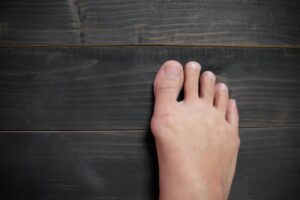Why Are Flat Feet a Health Concern?

You can walk comfortably for years when, all of a sudden, foot pain and other problems can appear overnight. If you have flat feet, they could be the culprit to your unexpected foot pain or injury.
Complications from flat feet can come after years of no obvious problems, or develop at the same time as adult acquired flat feet. Either way, health issues from flat feet need to be assessed and treated quickly at Phoenix, Arizona-based Arizona Foot Health by podiatrists Ryan Golub, DPM, and Zachary Flynn, DPM, AACFAS.
Discover why flat feet can be a health concern, and what to do about it.
About flat feet
A normal foot structure has an arch that extends up between the front of the foot and the heel. If your foot remains flat in those areas, you have a condition called flat feet.
You can be born with flat feet or develop them when you’re older due to medical conditions or lifestyle factors. Children with flat feet sometimes have the condition resolve on its own, later turning into arches, but adult-acquired flat feet don’t usually change without intervention.
Health problems flat feet can cause
Aside from noticing you don’t have an arch, flat feet don’t always cause disruptive symptoms. However, complications can develop without warning or progress without obvious symptoms.
Reasons to be concerned about flat feet, even if they don’t currently cause pain, include:
Problems with your walk
Flat feet can impact your gait. They can cause you to overpronate, or walk with your weight toward the inside of your feet, to roll your ankles, or to otherwise distribute weight unevenly when you walk.
Incorrectly walking can lead to various problems, including:
- Pain
- Stiffness
- Injuries
- Shoes wearing down incorrectly
All of these challenges can make it harder to walk or run, impacting your mobility.
Lower body injuries
Over time, misalignment caused by flat feet makes you more vulnerable to acute and overuse injuries to your bones and tendons. Injuries are more common in your feet, ankles, legs, and even your hips and lower back.
Muscle strain
Walking with flat feet can lead to pain from the continued strain on the muscles and ligaments in your feet and ankles. Strains are most likely to occur in your feet and ankles.
Ankle arthritis
Having flat feet puts pressure on the ankle by causing it to move in unusual ways to walk. In addition to pain and stiffness, the stress increases your risk of arthritis in your ankles.
Preventing and treating flat feet complications
If you have flat feet, make an appointment to have them evaluated by our team, even if you have no current symptoms. Our team can assess your arches and see if they’re impacting your gait or anything else that could cause you problems down the road.
Preventative treatments like custom orthotics, supportive shoes, and exercises that improve your lower body strength and flexibility can help prevent future problems. If you have pain from flat feet, our team also recommends conservative measures like over-the-counter painkillers, rest, and a stretching routine to help relieve pain.
Severe flat feet can also be treated with reconstructive surgery. Reconstructive surgery realigns your foot surgically to fix the flat feet.
With the right monitoring and treatment, flat feet don’t have to cause permanent health problems. Contact our team to have your flat feet evaluated.
You Might Also Enjoy...
The Achilles Heel
Given Arizona’s climate, patients are able to remain active year round. It’s why we all chose to live here. But…
Alleviating Back Pain and Other Benefits of Custom Orthotics You Didn’t Know About
Would you ever imagine that custom foot orthotics could improve your quality of life? That’s what many people say after…
9 Helpful Tips to Prepare Your Home Before Bunion Surgery
When moderate interventions, such as wearing wider shoes or using pads in your shoes, fail to ease your bunion pain…
When Should You Go to the Doctor for an Ingrown Toenail?
In most cases, you can nurse an ingrown toenail at home with over-the-counter pain medication, topical antibiotic creams, and soaking…
6 Home Exercises to Keep Your Ankles Strong
Ankles that feel wobbly and weak are vulnerable to injury. If you play sports, run, jump, or just walk often,…
Is Surgery My Best Option For Treating Bunions?
You have a bunion and it isn’t pretty, but if your bunion is small enough, or doesn’t hurt, you may…






